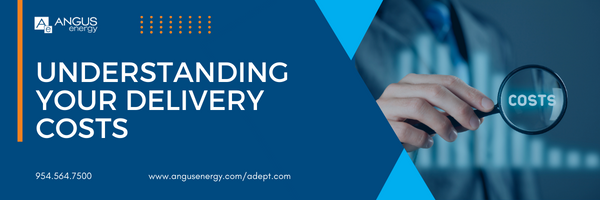What are your goals?
You have customers with needs. You have assets to service those needs. You have a planning mechanism to deploy your resources.
Your ultimate goal is to manage your deliveries such that you spend the lowest amount of time and money keeping your customers tanks with more than enough fuel to satisfy their needs – without risking too many runouts. Managing those expenses requires focusing on both the fixed costs of your assets – i.e., your delivery trucks and associated expenses (insurance, maintenance, etc.), as well as the variable costs – i.e. driver wages and benefits, fuel for the delivery trucks, wear and tear on vehicles, etc.
How do you achieve your goals? You need to start with the costs
Direct costs to deliver fuel are very different from the SG&A of your company and need to be looked at differently. Primarily there are two buckets: Fixed and Variable. The Fixed costs are those that you are going to have whether it is a warm winter or a cold winter. The biggest of these costs, of course, are the costs of your fleet of delivery trucks. Whether the truck is purchased or leased, there is a monthly cost related to it – often via amortization. The truck, used or not, hits your P&L. Additionally, the costs to insure the truck, to provide routine maintenance, and to garage/store the truck are all parts of the cost. From our conversations with numerous oil and propane distributors – with fleets that combine shiny & new, along with the old, “only a few delivery days a year” – the reasonable annual fixed cost for the truck is about $70,000. What is your reasonable cost?
Beyond that are the variable costs. They include the wages paid to drivers for their shifts, the fuel that – at 4 or 5 miles per gallon – is paid to drive the trucks 100 miles per day delivering fuel, the incremental costs of wear and tear, fluids, wiper blades, etc. The costs are not incurred if you don’t have the truck on the road, but when you do dispatch a truck, the variable costs for that dispatch can be – depending mostly on driver wages in your area – as much as $750/day (for an 8–9-hour shift). Lastly, and quite importantly, the average delivery truck – which includes the new truck with the automatic transmission that is driven 230 days per year and the 3 trucks that are only used for 20 days in January and February – is on the road 100 days per year. What are your variable costs?
It is reasonable to calculate that the average truck in your fleet, including the dispatching of that truck, costs you approximately $145,000 per year. The good news is that you get to use that truck to deliver, on average, about 400,000 gallons per year (100 days * 4,000 gallons per day). What did you come up with?
If you need help or need further guidance on how you can calculate these costs, please reach out. We have done this for dozens of companies and can help you establish your baseline and from there learn how to improve.

